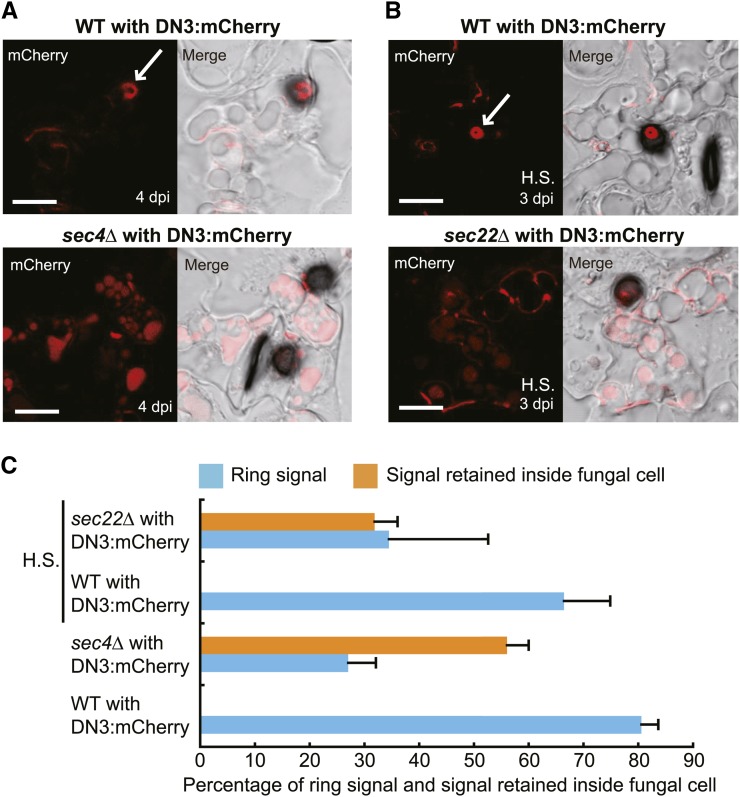Figure 10.
The sec4Δ and sec22Δ Mutants of C. orbiculare Reduced Effector Delivery to the Ring Signal Interface.
(A) Effector localization pattern during the biotrophic stage for wild-type and sec4Δ strains with TEFpro:DN3:mCherry. Each strain was incubated on cucumber for 4 d. The white arrow indicates the mCherry-labeled ring signal interface. Bars = 10 μm.
(B) Effector localization pattern during the biotrophic stage for wild-type and sec22Δ strains with TEFpro:DN3:mCherry. The cucumber cotyledons were pretreated by heat shock (H.S.) to enable the host invasion of the sec22Δ mutant. Each strain was incubated on cucumber for 3 d. Bars = 10 μm.
(C) Quantitative analysis of the effects of SEC4 and SEC22 disruptions on effector delivery to the ring signal interface. Each genotype with TEFpro:DN3:mCherry was incubated on cucumber for 4 d (no heat shock) or 3 d (heat shock). At least 74 biotrophic hyphae were investigated to determine the presence ratio of the effector ring signal. At least 50 mature biotrophic hyphae were investigated for each plant sample to determine the ratio of effector retention inside biotrophic hyphae. The mean and sd were calculated from three independent plant samples.

